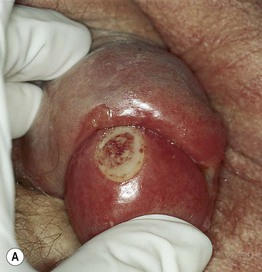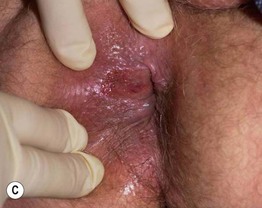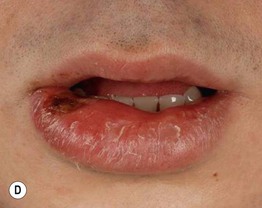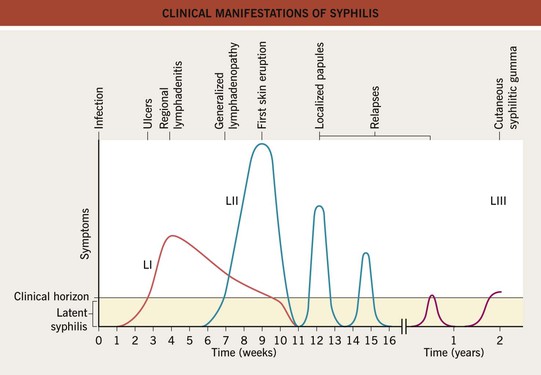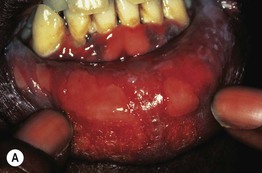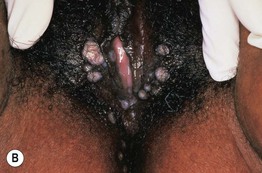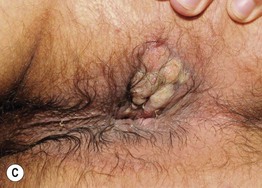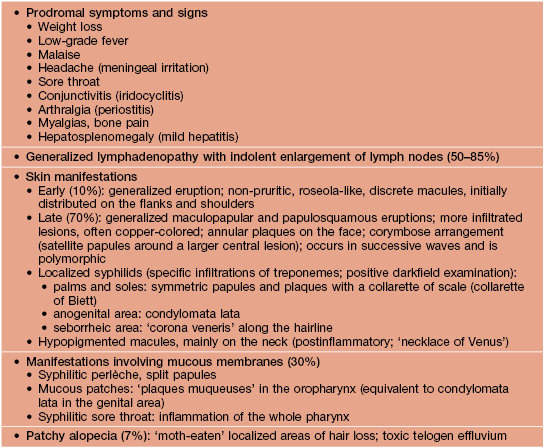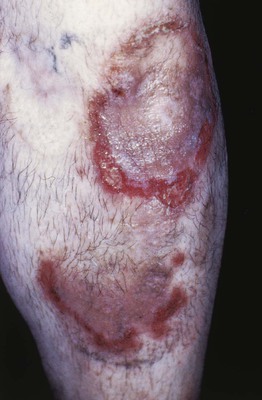69
Sexually Transmitted Diseases
In this chapter, five sexually transmitted diseases (STDs) are covered – syphilis, gonorrhea, chancroid, lymphogranuloma venereum (LGV), and granuloma inguinale. Additional more common STDs including herpes simplex infections, molluscum contagiosum, condyloma acuminata, crab lice, and HIV infection are discussed in Chapters 67, 68, 66, 71, and 65, respectively. When one STD is present, a search for others is indicated.
Syphilis (Lues)
• Etiologic agent is the spirochete Treponema pallidum; the infection is divided into four phases: primary, secondary, latent, and tertiary (Fig. 69.1), in addition to a congenital form.
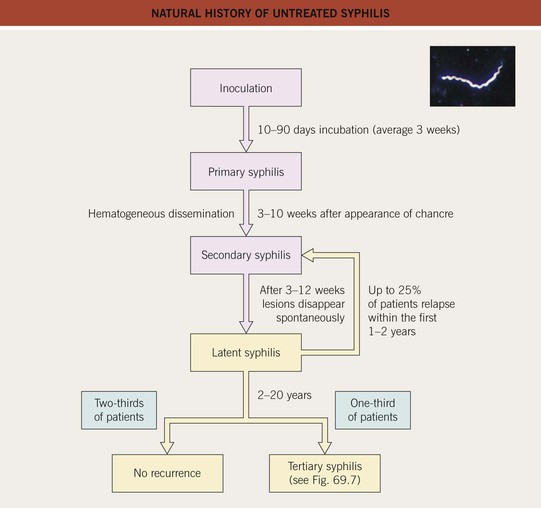
Fig. 69.1 Natural history of untreated syphilis. Chancres spontaneously resolve after a few weeks (see Fig. 69.3). In the group of patients with no recurrence, the rapid plasma reagin (RPR) becomes negative in 50% and remains positive in 50%. Adapted from Rein MF, Musher DM. Late syphilis. In: Rein MF (Ed.), Atlas of Infectious Diseases, Vol. V: Sexually Transmitted Diseases. New York: Current Medicine, 1995:10.1–10.13. Inset figure: Adapted from Morse SA, et al. Atlas of Sexually Transmitted Diseases and AIDS, 3rd ed. London: Mosby; 2003.
• One or more ulcers, usually anogenital, characterize primary syphilis and are referred to as chancres (Fig. 69.2); the ulcers are painless (unless secondarily infected) and upon palpation the base is firm; regional lymphadenopathy may be present (Fig. 69.3).
• Secondary syphilis reflects hematogenous dissemination and the skin lesions vary from macular to papulosquamous and from annular to granulomatous (Figs. 69.4 and 69.5); mucosal involvement is common and includes mucous patches, split papules at the angles of the mouth and condyloma lata (Fig. 69.6); usually accompanied by constitutional symptoms (Table 69.1).

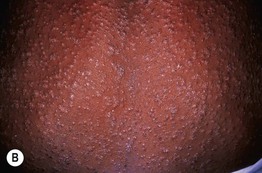
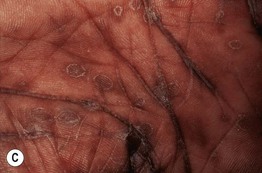
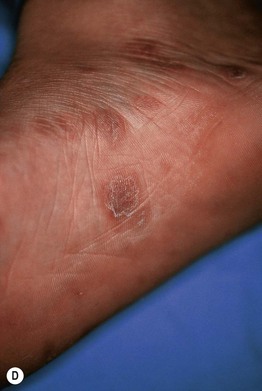

Fig. 69.4 Secondary syphilis – cutaneous manifestations. Widespread exanthem of pink papules (A) and generalized papulosquamous lesions (B). Lesions on the palms (C) and soles (D, E) can have a collarette of scale; in patients with more darkly pigmented skin, these lesions may have a copper color. E, Courtesy, Angelika Stary, MD.
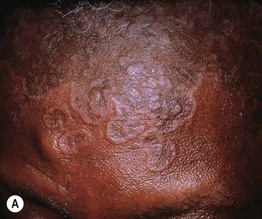

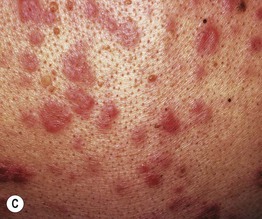
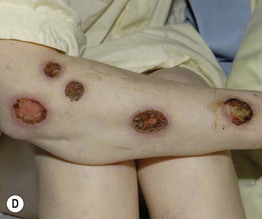
Fig. 69.5 Less common manifestations of secondary syphilis. A Annular plaques with central hyperpigmentation on the forehead. B Split papule at the oral commissure. C Granulomatous nodules and plaques. D ‘Malignant’ syphilis with multiple necrotic, ulcerated, and crusted lesions associated with severe constitutional symptoms. D, Courtesy, Angelika Stary, MD.
• Tertiary syphilis is preceded by a latent phase that can last for years (Fig. 69.7); the skin and mucous membranes, as well as the bones, develop gummas (Fig. 69.8), with cardiovascular syphilis and neurosyphilis representing the major causes of death in those who remain untreated.
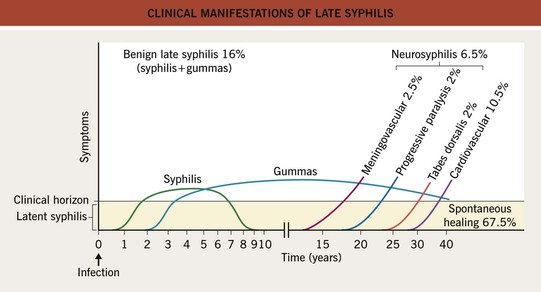
Fig. 69.7 Clinical manifestations of late syphilis. Gummas occur most commonly in the skin (70%) and less often in the bones (10%) or mucous membranes (10%). In neurosyphilis, both endarteritis and direct invasion of the brain parenchyma can occur. Tabes dorsalis presents with painful paresthesias of the limbs, ataxia, and Argyll Robertson pupils. Adapted from Fritsch P, Zangerle R, Stary A. Venerologie. In: Fritsch P (Ed.), Dermatologie und Venerologie. Berlin: Springer, 1998:865–886.

